© All Rights Reserved.
Persian Tea Recipe, Delicious Traditional Beverage in 15 min
Persian tea is the second most popular beverage in the world after water, and it is a mixture of myth, fact, and mythology mixed with a bit of philosophy.
International Tea Day is May 21, which is an opportunity to honor tea fans for this drink. The history of tea and persian tea is also very long and has passed through many countries for thousands of years.
The cultivation of the tea plant called Camellia sinensis dates back to 5000 years ago in China, and due to the many properties that tea had, its cultivation gradually increased in Asia and then spread throughout the world.
According to evidence, tea has also been cultivated in the Indian state of Assam and northern Myanmar.
All Iranians know how to prepare two-colored tea, so pour a glass of double-colored tea and read an interesting and readable narrative about the history of tea drinking in Iran and the world in Cookery Magazine on World Tea Day.
Ingredients for making Persian Tea
| Tea | 1-2 teaspoon |
| Water | 1 kettle (a bout a liter) |
Recipe for making Persian Tea
The first step in making Persian Tea
Fill half a kettle with water and put it on the flame to boil with high heat. Let the water heat up to a temperature of 88 to 100 degrees Celsius.
The Persian Tea second step
After the water boils, we lower the heat.
The third step
Then, pour a teaspoon of tea into a teapot.
The fourth step in brewing Persian Tea
Then, add a cup of boiling water to dry tea.
⭐️If you don’t like tea leaves in your glass, you can pass it through a strainer or filter and pour it into the cup after the tea gets the desired taste.
You can add fresh lime or honey, milk, and sugar to make the black tea tastier.
Golden tips for having the best Persian Tea
- It is better to eat it with dates, dried berries, or sweets to increase the properties of tea.
- It is better to mix several types of tea together to have better tea in terms of taste and color.
- Before brewing tea, wash it once (pour the tea into the teapot, pour water into it, and empty it).
- If you want the tea to brew faster, put a cloth on the teapot and remove the cloth after brewing.
- Excessive consumption of tea is not good, and consuming 2-4 glasses of tea daily is recommended.
- If you rinse the teapot and tea with cold water before pouring boiling water, it will give a better color (tea washing).
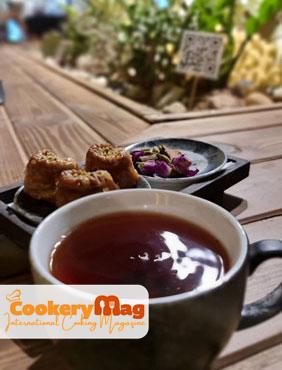
Use cinnamon sticks, cardamom, rose (Damask rose), rose water, or tea fragrance leaves (fragrant plant) to make the tea fragrant.
Iranians usually use these kinds of condiments to flavor their Persian tea.
Persian tea is the most testier tea that everyone who traveled to Iran could drink.
- Before pouring the Persian tea, pour some boiling water into the cup so that the tea cup will remain hot after pouring.
- If the tea brews too much or reaches the boiling border, you can prevent its harsh taste by adding two sugar cubes.
- To store brewed tea for a long time, remove the tea slags from the teapot and put the tea without slags back into the teapot.
- Depending on the type of tea, 1-2 teaspoons are enough for each teapot, and it is better to fill 2/3 of the teapot with boiling water.
Properties of tea
- Anticancer
- To calm down
- aid in digestion
- Remove bad breath
- Cholesterol reduction
- Relaxing muscles

- prevent high blood sugar
- Reduce body inflammation
- Increase body metabolism
- Regulation of heart rate and efficiency
- Relieving migraines and heaviness of the head and tiredness
- Improving the condition of the gums and the strength of the teeth
Having a journey in the history of Persian Black Tea
According to a famous Chinese legend, the history of the discovery of tea dates back to 2737 BC. At that time, the emperor “Shennong,” was removed from power and driven to a remote spot in southern China.
Shennong was also an expert scientist who accidentally discovered tea.
Shennong, who had no money to buy a drink but water, was walking in the garden one day when a tea tree leaf fell into the glass of boiling water in his hand due to the wind.
The emperor tasted the drink and not only liked it but also found it so relaxing that he sat under that tree for the next seven years and did not drink anything again.
After that, he did a lot of research on tea and its healing properties, and he reached surprising results.
According to the second version of the Chinese legend of Shennong, the divine farmer, people have named him the discoverer of tea, a sacred farmer whom the ancient Chinese believed to be the origin of many plants.
Shennong was also the discoverer of rice in ancient China. In the third narrative, this person is the emperor of China and discovers tea by chance.
As mentioned in the history of the discovery of tea, the servants were preparing boiling water for him one day. The emperor used to have the water he drank boiled and cooled beforehand.
Due to the carelessness of the servants, a tea tree leaf fell into the water, and they took it to the emperor. Contrary to expectations, the emperor found the drink very tasty.
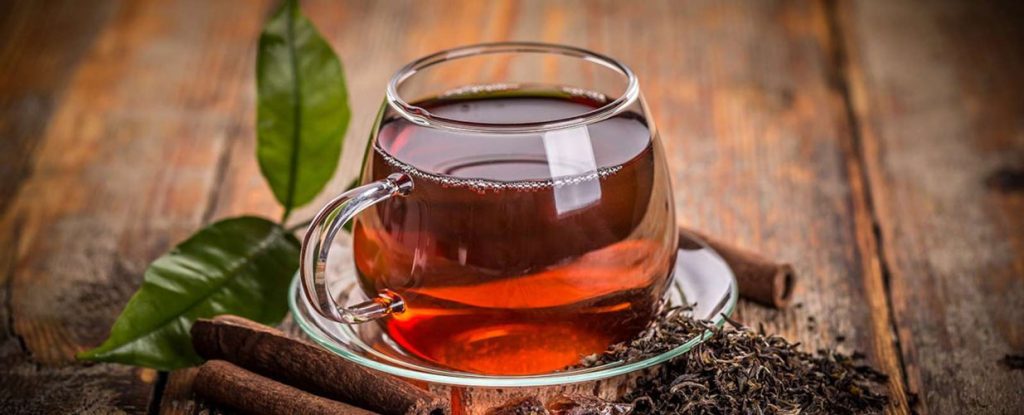
According to another story, an Indian legend attributes the discovery of tea to the people of this land. According to this legend, Prince “Bodhidharma,” who founded the first school of “Zen” in India, went from India to China in 520 AD.
He, who was in the process of learning more complete principles of “Zen,” promised himself that he would not sleep for 9 years and spend these 9 years in meditation and thinking.
But finally, his eyelids fell together, and he cut his eyelids out of anger and threw them on the ground.
It is said that in the place where his eyelids fell, a tea plant grew from each of his eyelashes, and according to this legend, the tea tree is a heavenly gift for those who meditate.
It is still unclear whether tea came from China, India, or Tibet, but it was most likely discovered in one of these three regions, and Chinese merchants introduced it to other nations.
As we all know today, tea consumption is one of the integral parts of the normal life of people in Iran; however, the history of tea consumption in Iran is less than two centuries.
In general, it is not clear when the Iranians first got to know this drink.
Abu Rihan al-Biruni, in his book, Al-Saidnah, which was written in the first half of the fifth century, gave details about the tea plant and its use as a drink in Tibet and China.
Amir Kabir Farahani has played a very important role in promoting tea in Iran.
He bought two sets of tea Porcelain from the French government, which included a silver samovar, and by creating the necessary conditions, he could localize the necessary equipment for drinking tea.
Drinking tea is so popular among Iranians that global statistics show that Iran alone accounts for 4-5% of the world’s tea consumption.
During the Safavid period, tea consumption became common among the wealthy sections of society or in the reception of kings.
Tea was widely spread in the Qajar period, mainly during Naser al-Din Shah’s time. The high consumption of tea in Iranian society and its importation and foreign exchange were such that it made governments think about its cultivation in Iran.
First, an Isfahanian businessman named Haj Mohammad Hossein Isfahani started tea cultivation in several parts of Iran in 1261 or 1262 AH, brought tea seeds, and planted tea in several parts of Iran, but despite his success, his business did not develop.

Then Mohammad Mirza Kashif Al-Saltaneh, who was sent to India, managed to bring a large amount of tea seeds and seedlings to Iran and planted them in Lahijan (the date of his arrival in Tehran is recorded on Aban 10th, 1279 AH).
With his efforts, Persian tea cultivation was finally developed and reached about 600 hectares in 1309 AH, and in 1311, the first Persian tea factory was opened in Lahijan.
The common drink of the people was coffee. Anyway, the history of drinking tea shows that this hot, popular, and colorful drink has played a big role in Asian culture as a healing liquid and also as a symbol of people’s social status.
For centuries, Persian tea was a drink reserved for aristocrats, courtiers, and rich people, and the common people did not drink much of it.
The Dutch brought tea from China to Europe. Contrary to popular belief, tea is an English drink, but in fact, after the Asians, it was the Dutch who drank tea.
Tea is a new drink in Europe. After Dutch merchants bought tea from the Chinese and sold it to European shopkeepers, it took a century for the Queen of England to choose tea as her breakfast drink.
In fact, before the 18th century, Europeans drank tea to cure their diseases, but from the 18th century onwards, drinking tea became a general and widespread culture.
In the history of tea drinking, England is always included, perhaps because among the Europeans, it is the British who have a special interest in drinking tea and, of course, have a special ceremony for evening tea.

Although for many years after the arrival of tea in Europe, coffee was still the favorite drink of the English, especially among English men, but little by little, in the 17th century, English women started drinking tea as a drink with authenticity. At the same time, the first tea shop in England was opened.
Tea became more popular in England when Charles II married the Portuguese princess Catherine of Braganza. In fact, this English-Portuguese marriage made tea very popular in England, and this issue is considered a turning point in the history of tea drinking.
Tea was the favorite drink of the Portuguese-born queen of the English people, and the noble women waiting to see what their new queen would do to imitate her turned to drink tea, which was very expensive.
The aristocracy drank tea in expensive china cups imported from Portugal, which had trade relations with China, and this tradition persists in England: drinking English tea sweetened with sugar in china cups and saucers.
Frequently Asked Questions about Persian Black Tea
What is tea?
Tea is an aromatic drink usually obtained by pouring hot or boiling water over the leaves of the Camellia sinensis plant, an evergreen plant native to East Asia. After water, this drink is the most consumed in the world.
When and where was the tea plant discovered?
The tea plant was first known in China about five thousand years ago, and its healing properties were gradually discovered. In addition, tea has also been used for coloring purposes.
How long can brewed tea be consumed?
Brewed tea can be used for the first 6 hours, but after two hours, it gradually loses its color and fresh smell.
Persian Tea Recipe, Delicious Traditional Beverage in 15 min
Course: DrinksCuisine: Persian FoodDifficulty: Easy4
servings30
minutes40
minutes300
kcalIngredients
Tea, 1-2 teaspoons
Water 1 kettle (a bout a liter)
Directions
- The first step in making Persian Tea
Fill half a kettle with water and put it on the flame to boil with high heat. Let the water heat up to a temperature of 88 to 100 degrees Celsius. - The Persian Tea second step
After the water boils, we lower the heat. - The third step
Then, pour a teaspoon of tea into a teapot. - The fourth step in brewing Persian Tea
Then, add a cup of boiling water to dry tea.
⭐️If you don’t like tea leaves in your glass, you can pass it through a strainer or filter and pour it into the cup after the tea gets the desired taste.
You can add fresh lime or honey, milk, and sugar to make the black tea tastier.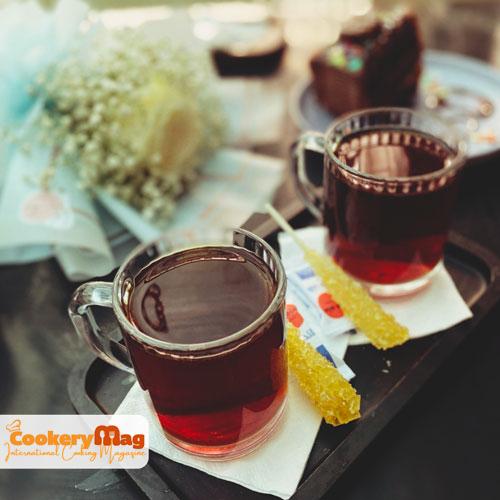
Notes
- It is better to eat it with dates, dried berries, or sweets to increase the properties of tea.
- It is better to mix several types of tea together to have better tea in terms of taste and color.
- Before brewing tea, wash it once (pour the tea into the teapot, pour water into it, and empty it).
- If you want the tea to brew faster, put a cloth on the teapot and remove the cloth after brewing.
- Excessive consumption of tea is not good, and consuming 2-4 glasses of tea daily is recommended.
- If you rinse the teapot and tea with cold water before pouring boiling water, it will give a better color (tea washing).
- Before pouring the tea, pour some boiling water into the cup so that the tea cup will remain hot after pouring.
- If the tea brews too much or reaches the boiling border, you can prevent its harsh taste by adding two sugar cubes.
- To store brewed tea for a long time, remove the tea slags from the teapot and put the tea without slags back into the teapot.
- Depending on the type of tea, 1-2 teaspoons are enough for each teapot, and it is better to fill 2/3 of the teapot with boiling water.
- Use cinnamon sticks, cardamom, rose (Damask rose), rose water, or tea fragrance leaves (fragrant plant) to make the tea fragrant.
Conclusion of Persian tea
Thank you for being with us with this delicious and popular Persian tea. If you have any questions about Persian tea, it’s my honor to answer. Enjoy your exploration of Persian cuisine!
Persian tea article provides complete information about the history of Persian tea, black tea, and all kinds of teas.
Serving Persian Tea, this trendy and enjoyable drink, is worth saying; we are trying to make a complete introduction of this subject for you lovers of caffeinated drinks.
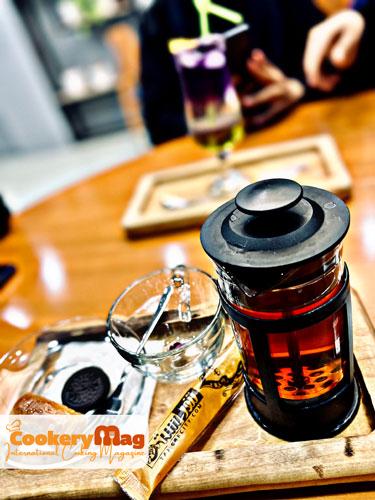
Maybe Iranians have a sense of ownership towards Persian tea due to its long history and high popularity in our society, Iran, but we should know that this issue is not only for Iranians, and this drink is the most consumed in the world after water.
Please share this article with your friends on Facebook, Twitter, Pinterest, and other social media. 🧡


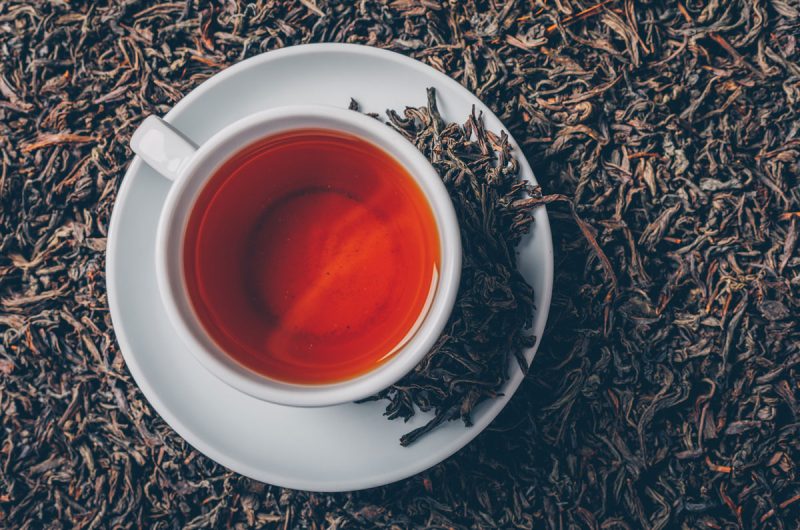
Gooooood damed, this was amazing, especially your original pictures, its vibe is like pinterest🥹🫠😌⛄️🥰
Dear Msiii
Thank you for your amazing and energetic comment.
I like coffee more than tea 😍
Wow, Dear shiva, you have amazing American taste
Great😍❤️
Thank you dear Tara…
😍😍😍
Woooooooooow, dear Fatemeh…
This is my favorite reaction to what i love
I appreciated that, thank you ❤️😍😘